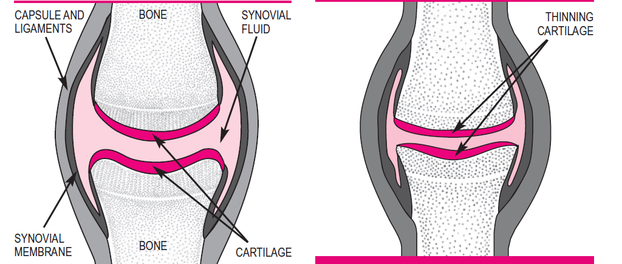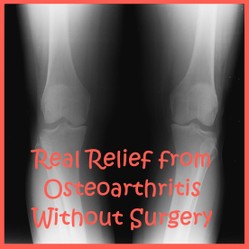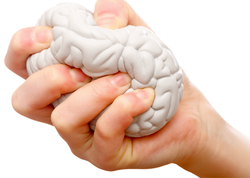
Osteoarthritis of the Knee
What is osteoarthritis and a few ways that it can be treated.
What is Osteoarthritis?
Walking down the stairs, I have begun to notice my right knee makes a creaking sound every time I take a step, Could this be the development of osteoarthritis of the Knee? I surely hope not but it seems mighty likely!
Osteoarthritis is one of the many diseases that start to kick in as one gets older(I am not that old!). It can creep up on you as the pain in your joints gradually gets worse and worse. For most people, it limits life by restricting movement as a result of pain.
Osteoarthritis derives its name from “Osteo” which means bone, ‘Arthro’ which means joint and ‘it is’ is the universal term used to depict inflammation (swelling).
The affected parts of the body are wherever you have joints;The ankle, hip and the knee being the joints most at risk of damage as they carry the most weight.
It is a condition caused by the thinning of the cartilage between the bones of a joint. See the picture below.
 Osteoarthritis of the Knee |
Normally, a tissue called cartilage is present on the bones at the point of connection (the joint). This cartilage bears all the stress of the bones rubbing against each other when the joint is in use. In osteoarthritis, this cartilage starts to thin so there is increased friction between the bones in a joint. In the Knee, as the cartilage disappears, the femur (thigh bone) and the tibia which leads down to the foot start to grate against each other causing pain.
This grating causes damage to the end of the bone which then tries to fix itself making matters even worse as it does not regenerate properly and leaves bits of uneven bone at the joint causing even more problems with friction.
Also, there is a normal amount of lubricating fluid in a healthy joint (synovial Fluid) which aids in the movement of the joint. However in Osteoarthritis, for unknown reasons this fluid starts to increase (probably the body’s response to the increasing friction as it tries to compensate by increasing lubrication). This increase leads to the swelling up of the Knee.
Stiffness, pain and inflammation occur.
Osteoarthritis of the Knee - Who is affected?
More than six million people in the UK have Osteoarthritis in one or both of their knees. That is a lot of people in a population that only numbers at 60million so about a tenth of the UK people suffer with this in their knees.
In the US, about 12.1% of the population aged 25 and over suffer from the condition. This is about 21million people!
This is a condition that affects a lot of people.
Treatment of Knee Osteoarthritis
It is not the easiest condition to diagnose as it resembles the symptoms of rheumatoid arthritis, the next most frequent occurrence of arthritis. However, once your physician has decided that you suffer from osteoarthritis of the knee then the usual treatment of the condition is the use of pain killers in the form of paracetamol (Acetaminophen) and Non-Steroidal Anti-Inflammatory Drugs (NSAIDs). These are usually the first points of call before progressing further. In the final stages of the condition when life becomes pretty painful, a knee replacement is considered.
Vibration Therapy(Kneease) is also another option available. This is a great new way to deal with the pain associated with osteoarthritis of the knee.
"Kneease helps with the pain. I´ve recommended it to many of my friends. "
There is no cure for this condition but there are definitely ways to make life a lot more bearable.
A little visual information on Knee Osteoarthritis
For more information on Osteoarthritis of the Knee
You might also like
Painfree Arthritic Knees Without SurgeryAPOS therapy saved my life. I was on a fast downhill spin into disability, se...
How to Lower Cortisol Levels Reduce Stress Hormone and Improve...Cortisol is a steroid hormone regulating metabolism, the immune system and ai...






 T-fal Actifry Deep Fryeron 06/02/2012
T-fal Actifry Deep Fryeron 06/02/2012
 Birthday in a boxon 05/22/2012
Birthday in a boxon 05/22/2012
 InsectLore Butterfly Garden - An educational breakthroughon 05/19/2012
InsectLore Butterfly Garden - An educational breakthroughon 05/19/2012
 Inspirational Home Decor with Wall Decals and Wall Arton 05/01/2012
Inspirational Home Decor with Wall Decals and Wall Arton 05/01/2012



What is your experience?